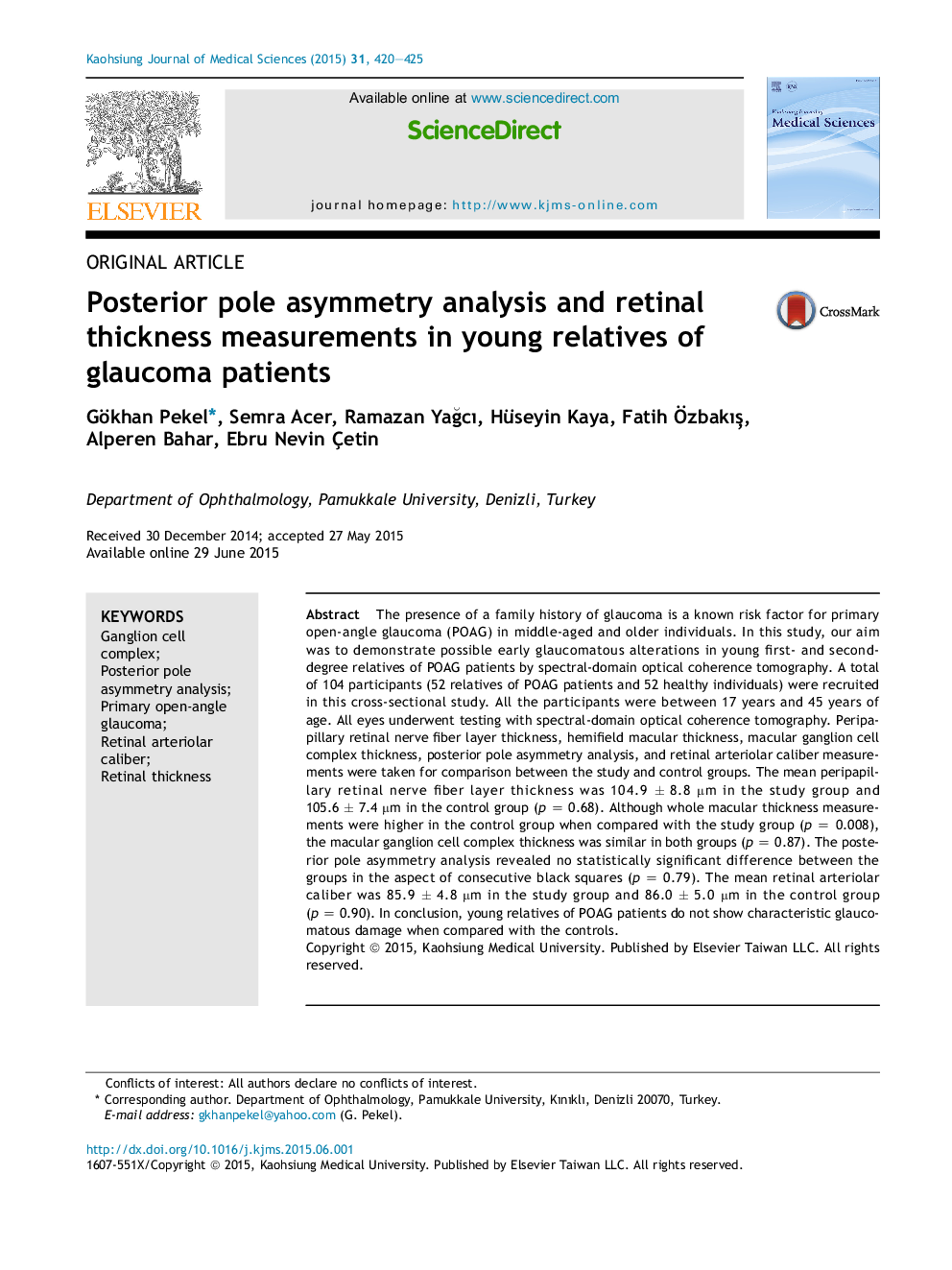| کد مقاله | کد نشریه | سال انتشار | مقاله انگلیسی | نسخه تمام متن |
|---|---|---|---|---|
| 3485219 | 1596919 | 2015 | 6 صفحه PDF | دانلود رایگان |
The presence of a family history of glaucoma is a known risk factor for primary open-angle glaucoma (POAG) in middle-aged and older individuals. In this study, our aim was to demonstrate possible early glaucomatous alterations in young first- and second-degree relatives of POAG patients by spectral-domain optical coherence tomography. A total of 104 participants (52 relatives of POAG patients and 52 healthy individuals) were recruited in this cross-sectional study. All the participants were between 17 years and 45 years of age. All eyes underwent testing with spectral-domain optical coherence tomography. Peripapillary retinal nerve fiber layer thickness, hemifield macular thickness, macular ganglion cell complex thickness, posterior pole asymmetry analysis, and retinal arteriolar caliber measurements were taken for comparison between the study and control groups. The mean peripapillary retinal nerve fiber layer thickness was 104.9 ± 8.8 μm in the study group and 105.6 ± 7.4 μm in the control group (p = 0.68). Although whole macular thickness measurements were higher in the control group when compared with the study group (p = 0.008), the macular ganglion cell complex thickness was similar in both groups (p = 0.87). The posterior pole asymmetry analysis revealed no statistically significant difference between the groups in the aspect of consecutive black squares (p = 0.79). The mean retinal arteriolar caliber was 85.9 ± 4.8 μm in the study group and 86.0 ± 5.0 μm in the control group (p = 0.90). In conclusion, young relatives of POAG patients do not show characteristic glaucomatous damage when compared with the controls.
Journal: The Kaohsiung Journal of Medical Sciences - Volume 31, Issue 8, August 2015, Pages 420–425
